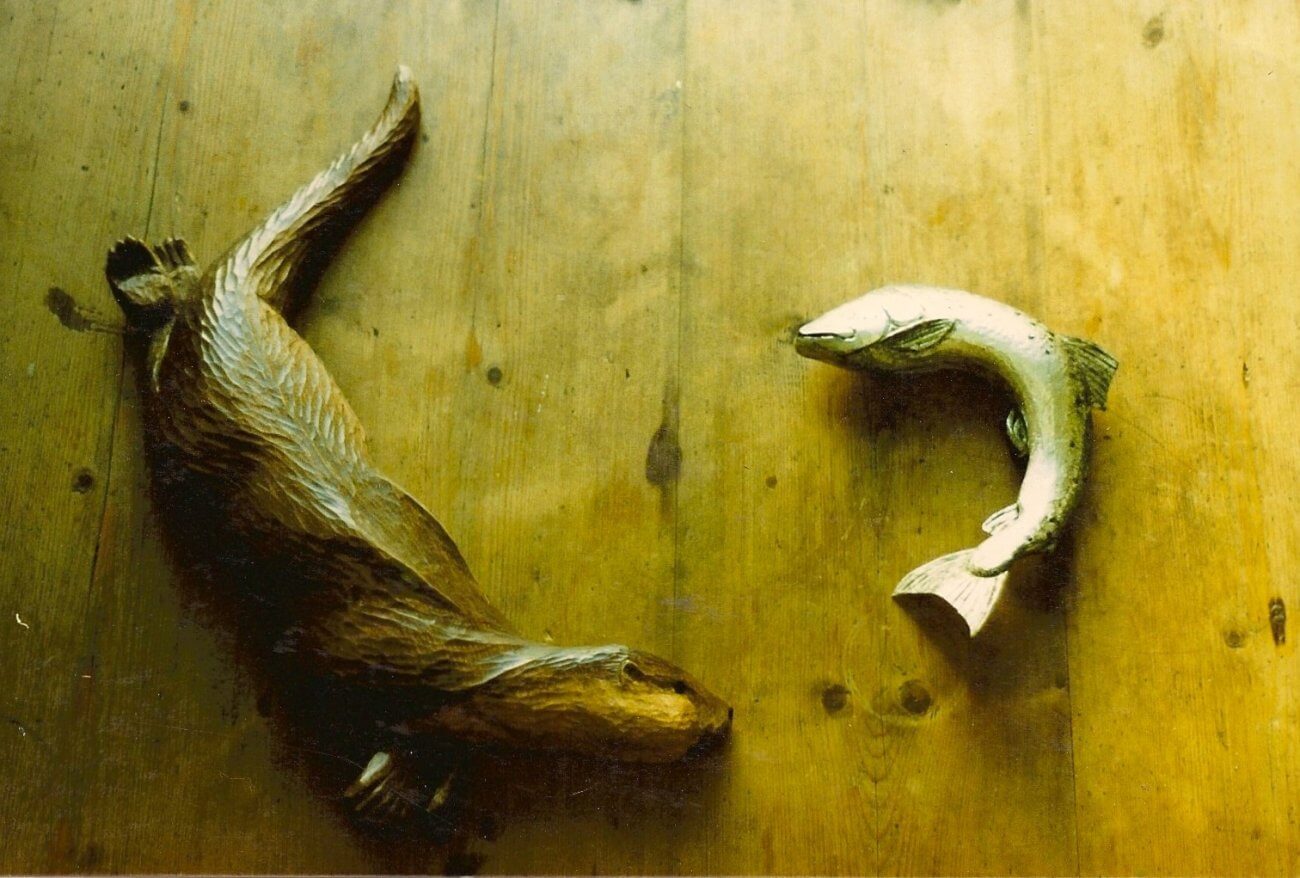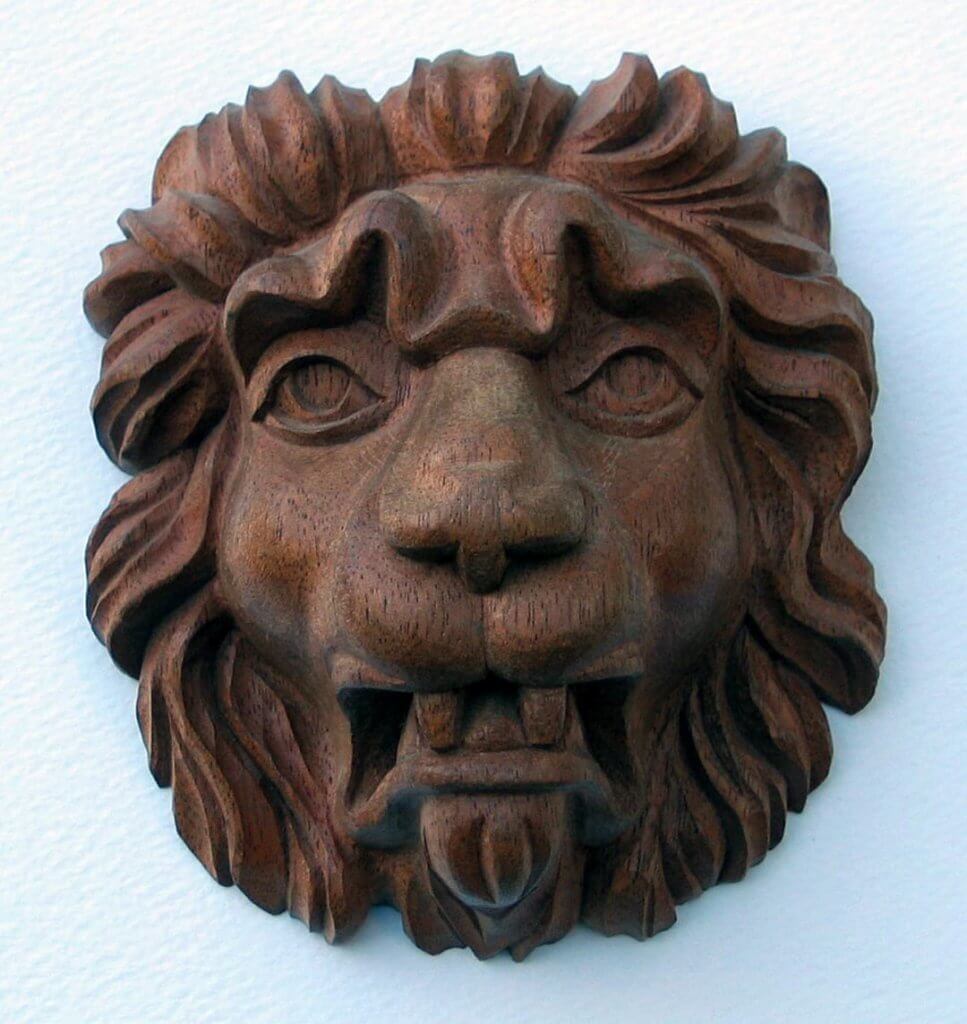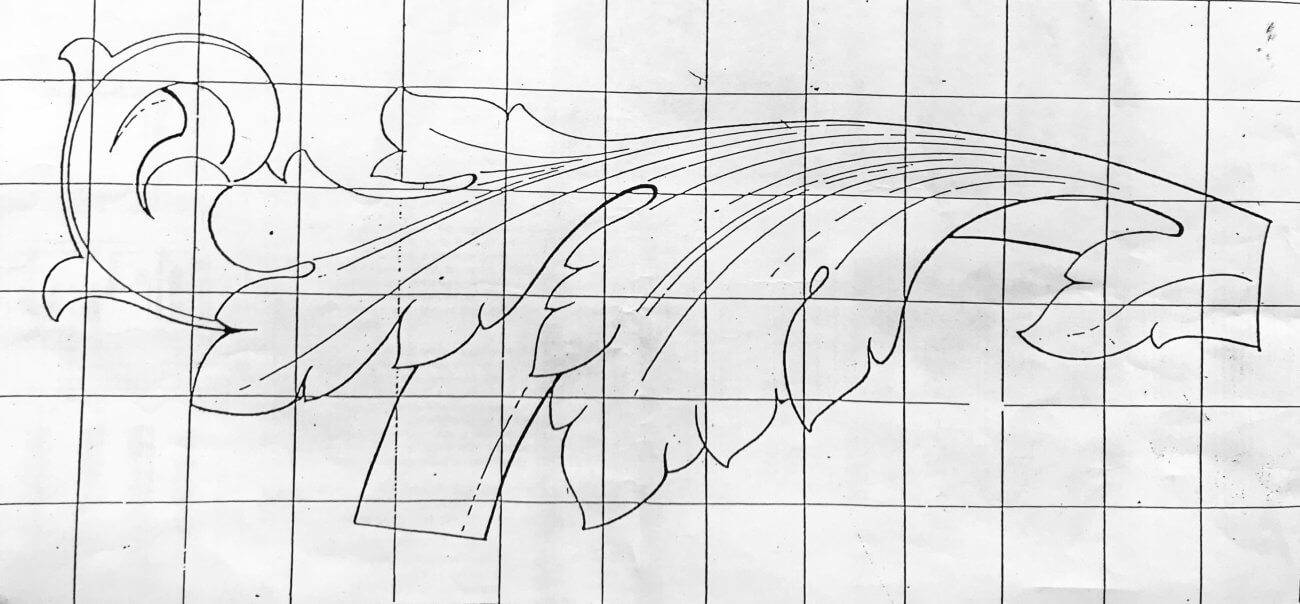Master Carver Ian Agrell discusses the importance of movement in flow in design and architectural woodcarving.
I realised recently that I have been teaching woodcarving to enthusiastic adults for 40 years. I mention this because each of my students comes with his or her own abilities, experiences, and, indeed, ambitions. Because I can’t completely change my approach for each one, teaching has forced me to think about the most efficient way to carve. Finding a way to express this continues to be invaluable in improving my own skills.
For all my students, regardless of their skill level and whether they’re carving an acanthus leaf, drapery, or an otter chasing a salmon, I put a lot of emphasis on understanding structural movement.

I ask the question “What causes the movement, and why?” The carver must get to grips with the source of this movement for the work to come alive. For example, the effects of progression on flowing water, or smoke, or a fern unwinding, are time, the surrounding environment, and the restriction of movement.
When I started teaching, and to avoid the chaos of all my students just whacking away on a lump of wood all day, I needed a format that taught them the essentials whatever their individual ambitions were. Whether they were carving for furniture or architecture, or creating three-dimensional sculpture such as animals or the human figure, I realized there were the same fundamental skills required for all their projects.

So, I set out to find a single starter project that would cover design and movement while also teaching the physical dexterity needed to pull it all off.
I found what I needed by reaching back to the 1970s, when I’d spent a happy time at the City and Guilds of London Art School. One of my teachers there was the expert woodcarver William Wheeler. He (with cabinetmaker Charles Hayward) had written a book called “Practical Woodcarving and Gilding.” It’s the only book I still recommend for the beginner. In it, Mr. Wheeler presents a line drawing and photo of a stylized acanthus leaf. I still use this exact example with my students today.

It’s not an easy project, but when taken in stages, novices can complete it in two days. In the process, they’ll learn the critical concepts of structural movement and flow while also acquiring many of the practical skills needed for most woodcarving. I like to think Mr. Wheeler would be proud of his legacy.


